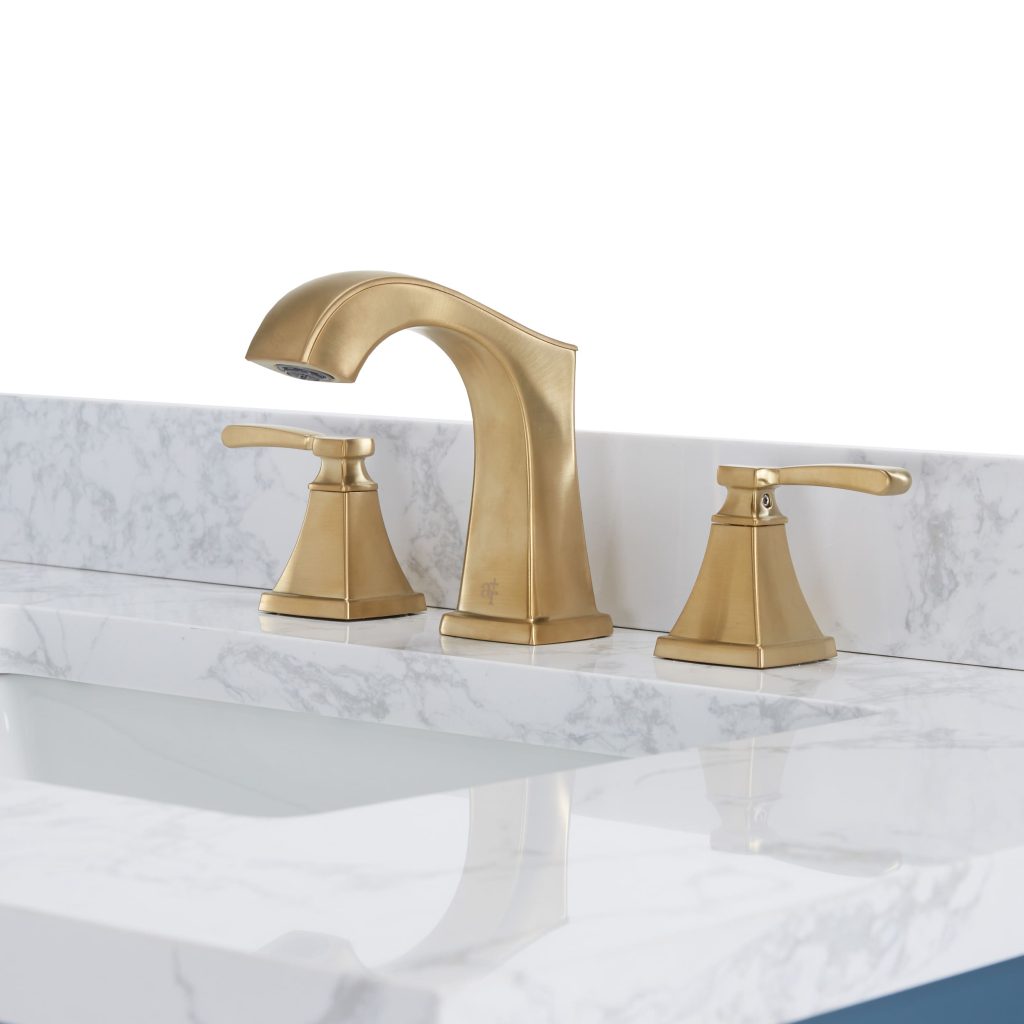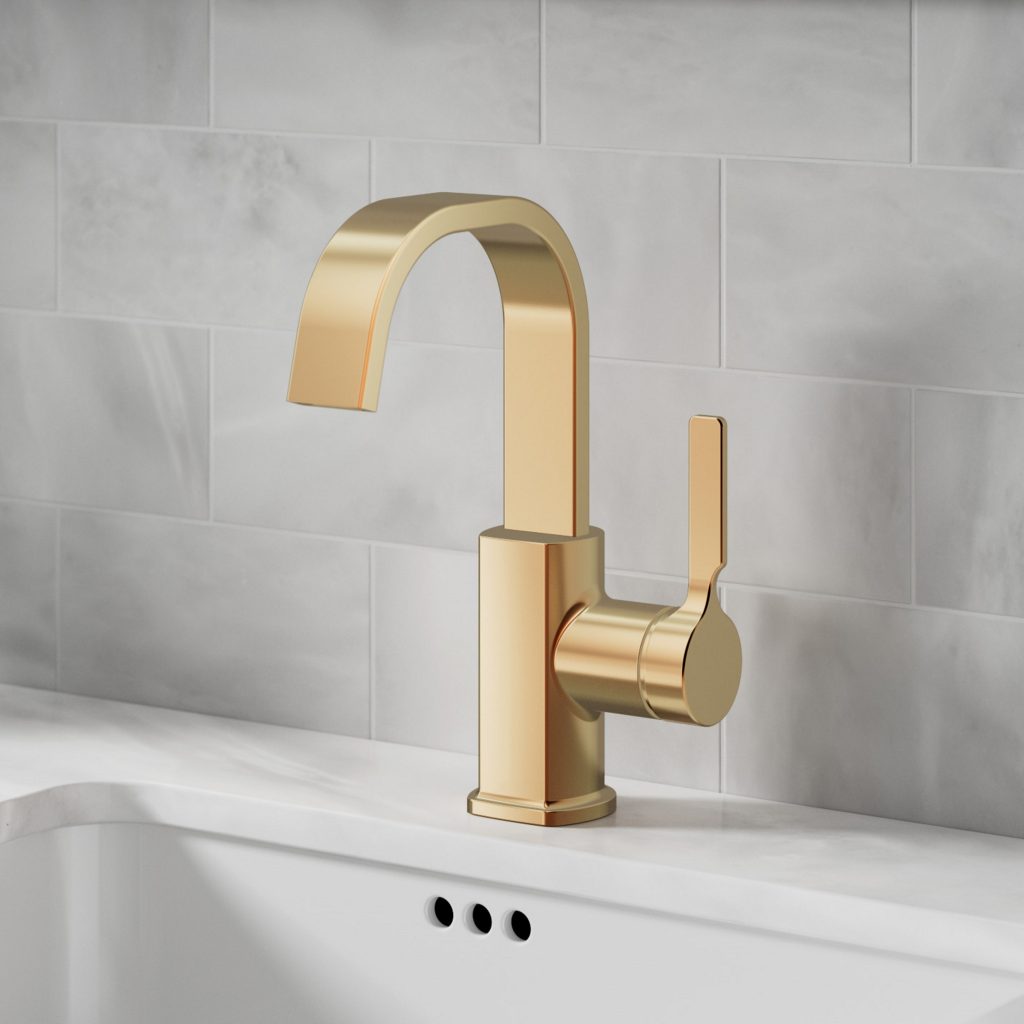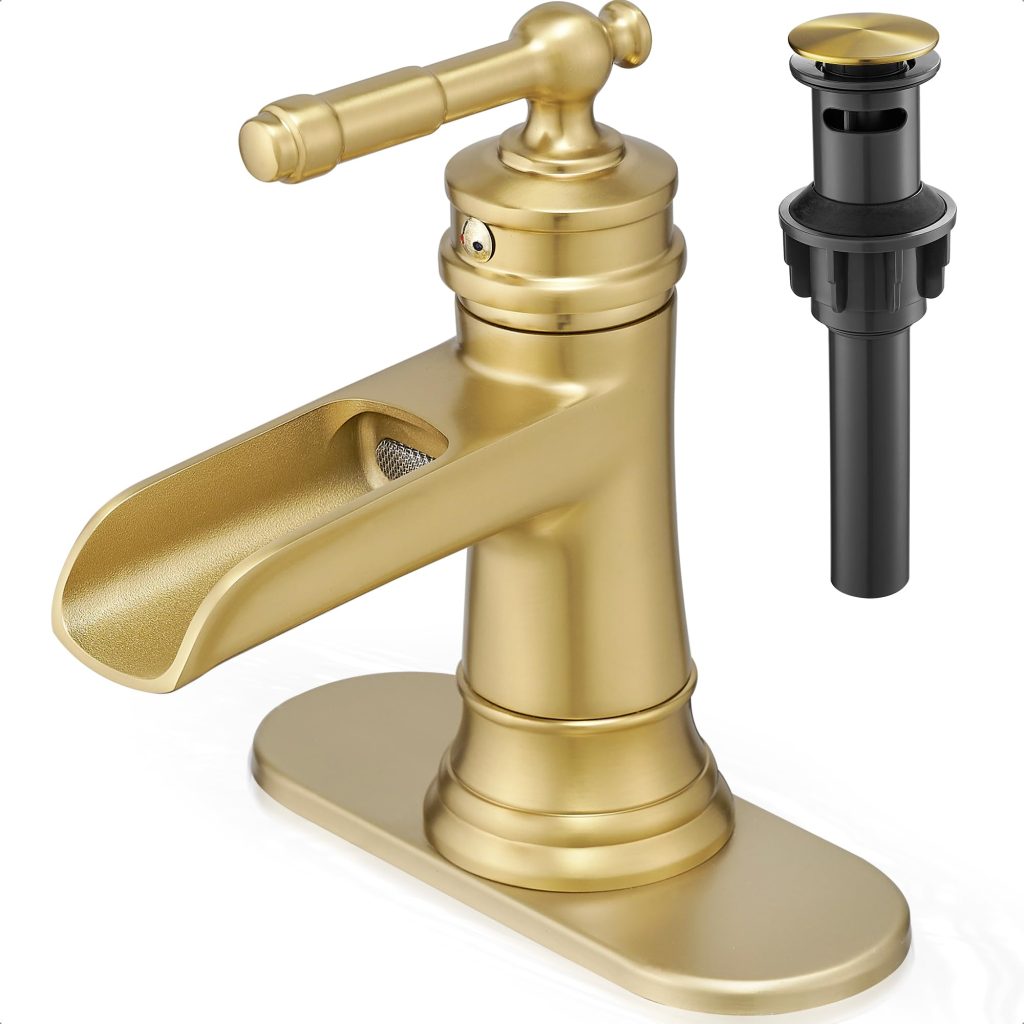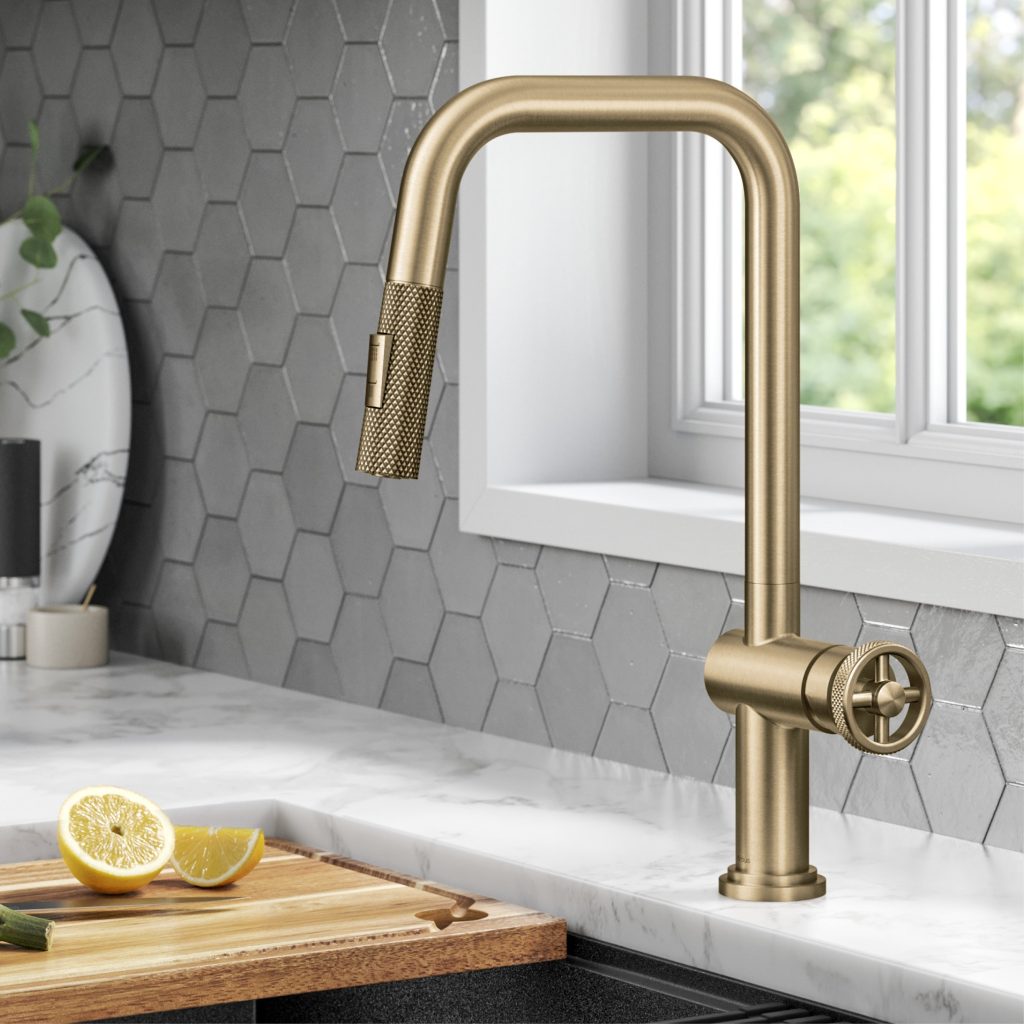Do gold faucets tarnish? Gold is often associated with luxury and opulence, and people often opt for gold faucets to add a touch of elegance to their bathrooms and kitchens. However, there is a common concern among consumers about whether gold faucets tarnish over time. In this essay, we will explore the myth of tarnishing gold faucets, examining the factors that contribute to tarnishing and debunking some common misconceptions.

Understanding Gold
To understand whether gold faucets tarnish, it is important to have a basic understanding of the properties of gold. Gold is a highly durable and resistant metal, and it does not tarnish or corrode easily. This is one of the reasons why it has been treasured throughout history and used for making jewelry, coins, and other valuable items. However, gold is often mixed with other metals to increase its strength and durability, and this can affect its resistance to tarnishing.
Factors Contributing to Tarnishing
While pure gold does not tarnish, gold-plated or gold-tone faucets may tarnish over time. This is because gold-plated faucets are made by applying a thin layer of gold onto a base metal, such as brass or stainless steel. Over time, the gold plating may wear off or become damaged, exposing the base metal to air and moisture, which can lead to tarnishing. Additionally, exposure to harsh cleaning chemicals, acidic substances, and abrasive materials can also contribute to the tarnishing of gold faucets.
Maintenance and Care
Proper maintenance and care are crucial in preventing gold faucets from tarnishing. Regularly cleaning and drying the faucets after each use can help to prevent the buildup of residue and oxidation. It is important to avoid using abrasive cleaners and harsh chemicals, as these can damage the gold plating and accelerate tarnishing. Instead, gentle cleaning with mild soap and water, followed by thorough drying, is recommended to keep gold faucets looking their best.
Debunking Misconceptions
There are several common misconceptions about gold faucets and tarnishing that need to be debunked. One of the most prevalent myths is that all gold faucets tarnish. As discussed earlier, pure gold does not tarnish, so faucets made from solid gold or high-quality gold alloys are highly resistant to tarnishing. Another misconception is that tarnishing is a sign of poor quality. While it is true that lower-quality gold-plated faucets may tarnish more easily, tarnishing does not necessarily indicate poor quality. With proper care and maintenance, even gold-plated faucets can last for many years without tarnishing.

Long-Term Durability
When it comes to the long-term durability of gold faucets, it is important to consider the quality of the gold plating and the underlying base metal. High-quality gold plating, combined with a durable base metal, can significantly extend the lifespan of gold faucets and reduce the likelihood of tarnishing. It is also worth noting that advancements in technology and manufacturing processes have led to the development of more durable and resistant gold finishes, offering consumers a wider range of options when choosing gold faucets for their homes.
How to clean and maintain gold faucets
Gold faucets are a luxurious addition to any bathroom or kitchen. Their exquisite appearance and elegant finish add a touch of sophistication to the overall decor. However, in order to maintain the luster and shine of gold faucets, proper cleaning and maintenance are essential.
-
Regular Cleaning:
The key to maintaining the beauty of gold faucets is regular cleaning. It is important to clean the faucets at least once a week to prevent the buildup of dirt, grime, and water stains. To clean the faucets, use a soft cloth or sponge and a mild, non-abrasive cleaner. Avoid using harsh chemicals or abrasive scrubbers as these can damage the delicate gold finish.
-
Removing Water Stains:
Water stains are a common issue with gold faucets, especially in hard water areas. To remove water stains, mix equal parts of white vinegar and water in a spray bottle. Spray the solution onto the affected areas and let it sit for a few minutes. Then, use a soft cloth to gently rub the stains away. Rinse the faucet thoroughly with water and dry it with a clean, soft towel.
-
Polishing:
To maintain the shine of gold faucets, it is important to polish them regularly. Use a high-quality gold polish specifically designed for use on faucets. Apply a small amount of the polish to a soft cloth and gently rub it onto the faucet in a circular motion. Buff the faucet with a clean, dry cloth to restore its luster and shine.
-
Avoiding Abrasive Cleaners:
When cleaning gold faucets, it is crucial to avoid abrasive cleaners and harsh chemicals. These can scratch the delicate gold finish and cause irreversible damage. Instead, opt for mild, non-abrasive cleaners that are specifically formulated for use on gold-plated surfaces.
-
Preventing Tarnishing:
To prevent tarnishing, it is important to keep gold faucets dry at all times. After each use, thoroughly dry the faucets with a soft towel to remove any water droplets. This will prevent water spots and tarnishing, keeping the faucets looking as good as new.
-
Using Protective Coatings:
For added protection, consider using a protective coating on gold faucets. There are various coatings available that can help prevent tarnishing and protect the gold finish from wear and tear. Before applying any coating, be sure to thoroughly clean and dry the faucets to ensure the best results.
-
Regular Inspections:
In addition to regular cleaning and maintenance, it is important to inspect gold faucets regularly for any signs of damage or wear. Look for scratches, chips, or discoloration and address any issues promptly to prevent further damage.
-
Professional Maintenance:
If gold faucets require extensive cleaning or maintenance, it is best to consult a professional. A professional cleaner can provide deep cleaning and restoration services to keep gold faucets looking their best.

Advantages of gold faucets
Gold faucets are a luxurious addition to any bathroom or kitchen, adding a touch of opulence and elegance. The use of gold in interior design has been a symbol of wealth and luxury for centuries, and gold faucets are no exception.
Aesthetic Appeal
One of the most obvious advantages of gold faucets is their aesthetic appeal. Gold is a timeless and classic metal that exudes luxury and sophistication. The warm, reflective surface of a gold faucet can instantly elevate the look of any bathroom or kitchen, adding a touch of glamour and elegance. Gold faucets come in a variety of finishes, from polished gold to brushed gold, allowing homeowners to choose the perfect option to complement their décor. Whether you prefer a traditional or modern style, gold faucets can add a touch of luxury and sophistication to any space.
Durability and Longevity
In addition to their aesthetic appeal, gold faucets are also known for their durability and longevity. Gold is a precious metal that is resistant to corrosion and tarnishing, making it an excellent choice for faucets. Unlike other metals, such as brass or stainless steel, gold faucets are less likely to show signs of wear and tear over time. This means that gold faucets can maintain their beautiful appearance for many years, making them a worthwhile investment for homeowners. Additionally, gold faucets are easy to clean and maintain, requiring only a mild detergent and soft cloth to keep them looking their best.
Conclusion
In conclusion, the myth of tarnishing gold faucets is based on a misunderstanding of the properties of gold and the factors that contribute to tarnishing. While gold-plated faucets may tarnish over time, proper maintenance and care can help to preserve their appearance and longevity. It is important for consumers to be aware of the quality and composition of gold faucets before making a purchase, and to follow recommended cleaning and maintenance practices to ensure their durability. With the right care, gold faucets can maintain their luster and elegance for years to come.

